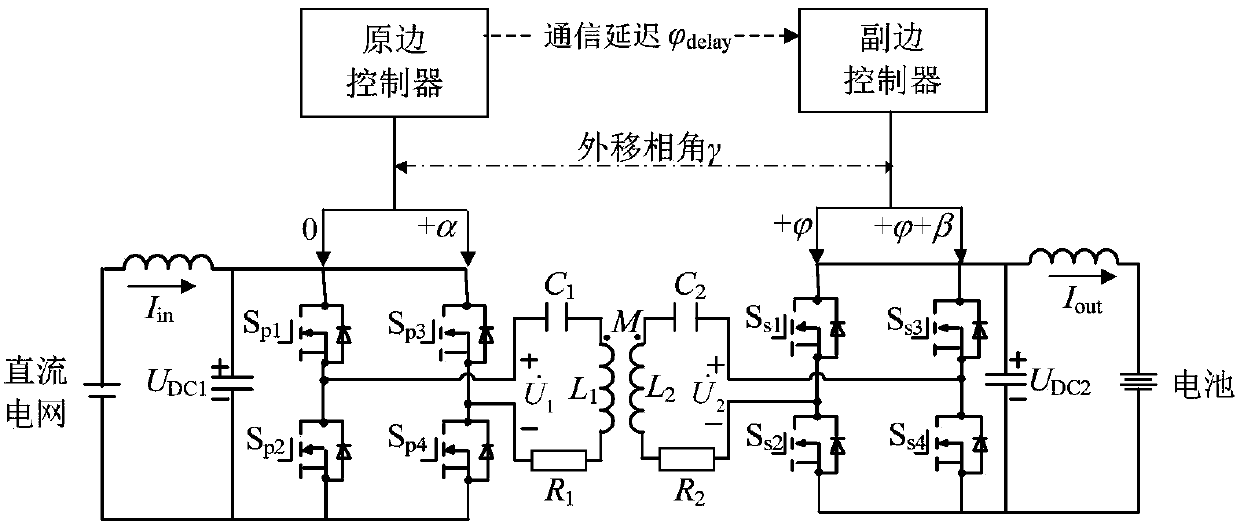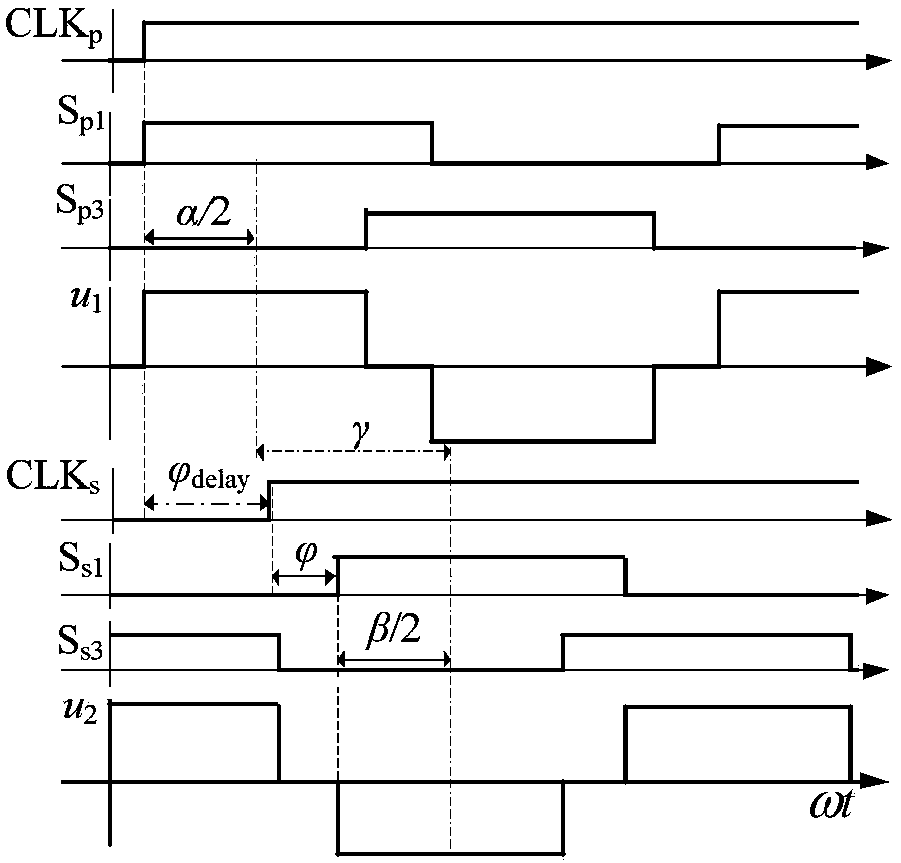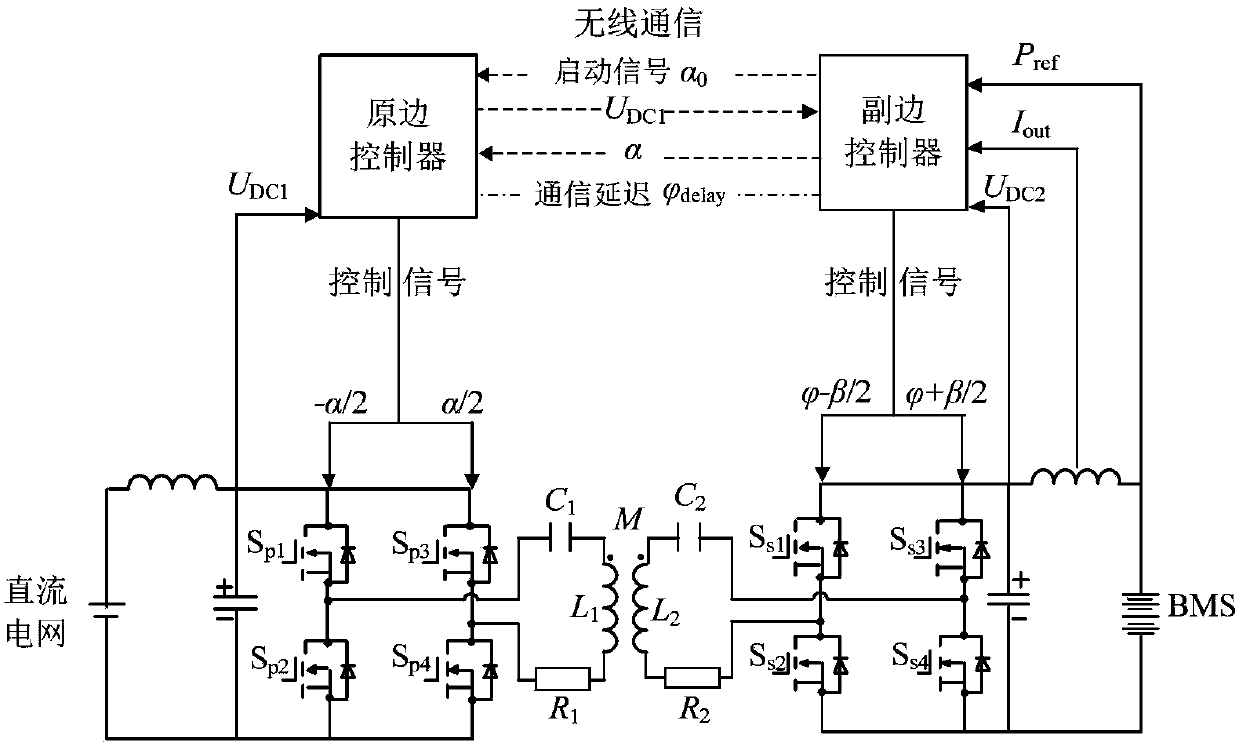Electric automobile two-way wireless charging system transmission power control method
An electric vehicle and wireless charging technology, applied in electric vehicle charging technology, electric vehicles, charging stations, etc., can solve the problems of high system cost, unknown and uncontrollable external phase shift angle γ
- Summary
- Abstract
- Description
- Claims
- Application Information
AI Technical Summary
Problems solved by technology
Method used
Image
Examples
Embodiment Construction
[0058] The embodiments will be described in detail below in conjunction with the accompanying drawings.
[0059] In view of the above-mentioned BWCS control requirements and the difficulties in the existing technology, the purpose of the present invention is to propose a BWCS transmission power control that does not depend on the accurate sampling of high-frequency current and is not affected by the delay of the primary and secondary wireless communication. Control Strategy. The information interaction process of the primary and secondary converters is as follows: image 3 As shown, the overall control block diagram is shown as Figure 4 shown. To ensure that the system voltage gain satisfies the constraints as much as possible Under the premise that the transmission power is controlled through power prediction, the BWCS system can maintain a high transmission efficiency in the full power range.
[0060] 1. The start-up process of the primary side converter
[0061] The ...
PUM
 Login to View More
Login to View More Abstract
Description
Claims
Application Information
 Login to View More
Login to View More - R&D
- Intellectual Property
- Life Sciences
- Materials
- Tech Scout
- Unparalleled Data Quality
- Higher Quality Content
- 60% Fewer Hallucinations
Browse by: Latest US Patents, China's latest patents, Technical Efficacy Thesaurus, Application Domain, Technology Topic, Popular Technical Reports.
© 2025 PatSnap. All rights reserved.Legal|Privacy policy|Modern Slavery Act Transparency Statement|Sitemap|About US| Contact US: help@patsnap.com



